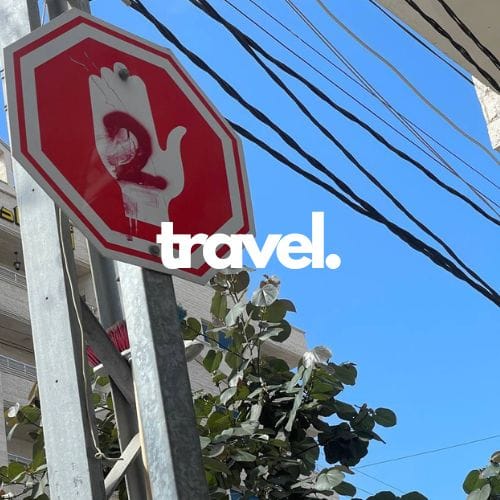Also: freedom of movement (or, the lack of thereof).
The ability to travel with ease is a privilege much of the world takes for granted. But it makes sense; freedom of movement is a basic human right—but it is one not granted to the people of Gaza.
Traveling in and out of Gaza is a daunting process. Still, it remains a dream for nearly every Gazan. Gazans are a curious and worldly bunch; unfortunately, securing a travel, student, or work visa is challenging and not without countless barriers. Even for those fortunate enough to secure the chance to travel, the journey from within the enclave to a taste of freedom itself is both humiliating and exhausting.1

Gaza only has two exits: the Rafah border between Gaza and Egypt and the Erez crossing between Gaza and Israel. And, for those who want to cross through either exit, the process is marred by exorbitant expenses, fluctuating rates, and constant worries.
The Rafah border is the preferred option, as accessing Erez crossing is even more challenging. Crossing Rafah begins with the Palestinian side of the border, where hopefully travelers undergo the usual identification process. Then begins the waiting game, when Gazans sit and wait, uncertain whether or not they’ll be allowed through.
The journey out of Gaza is lengthy and requires immense patience. Upon reaching the Egyptian side of the Rafah crossing/border, strict rules prohibit recording and photography. Again, the wait continues, with uncertainty about passage and the constant possibility of rejection. Sometimes, luck prevails, and Gazans are allowed passage after the nerve-wracking wait.
However, the journey does not end there. An eight-hour drive to Cairo awaits, but it’s barely ever just eight hours. Frequent stops for identification checks and bag searches prolong the journey, sometimes for days. Each stop is a reminder of the arduous life Gazans endure, both in and out of Gaza.
Despite the challenges, reaching Cairo is just another milestone as, for many, the ordeal continues with further searches and uncertainties. Some find solace in Cairo, while others continue their journey elsewhere. But, no matter what, the path in and out of Gaza is fraught with obstacles and uncertainty for all Gazans.
Gazans do not have a seaport or airport of their own. Their connection to the outside world is policed by others, who will never have their best interests, quality of life, or economy in mind. This is the reality of life under occupation. While it is said that everyone has the right to freedom of movement in the UN’s Universal Declaration of Human Rights, the concept of freedom of movement is foreign to Gazans. More than that, it is something most Gazans have perhaps never even imagined.
References
- Konrad, E. (2022, August 27). Feeling less than human: The hell of crossing into Gaza. +972 Magazine. https://www.972mag.com/crossing-into-gaza-hell/ ↩︎
